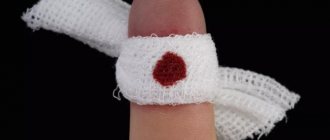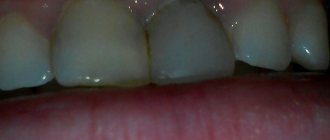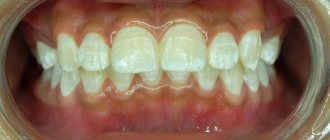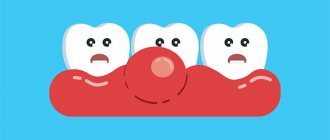The most important thing that parents should understand about acetone in a child is that it is not a disease, but a natural physiological process associated with metabolism. The body resorts to this option as an alternative way to obtain energy. Acetone in children has nothing to do with bacteria and viruses. An increase in acetone in the urine signals a deficiency of glucose in the body, and therefore the concentration of ketones (products of partial breakdown of fats) in the blood increases.
With the information support of pediatricians at the Amel Dental clinic, we have prepared an article in which we talk about the mechanism of acetone formation in children, its causes and symptoms, and most importantly, how to react correctly, what measures to take to cope with the problem.
How does acetone appear in a child’s urine?
The formation of all human organs and systems occurs already during intrauterine development, but in childhood many systems cannot yet perform their functions 100%. Acetone in the urine is one of the consequences of unregulated metabolic processes.
The child's diet contains carbohydrates. During the digestion of carbohydrates, glucose is absorbed into the blood and provides the body with energy. But part of it accumulates in the liver, forming a supply of glucose in the form of glycogen, forming an energy reserve. Glycogen is consumed during high physical and mental activity. In children, glycogen reserves are small and energy expenditure is high.
When glucose deficiency occurs, fat breakdown begins. The body receives the necessary energy, but at the same time, if the child does not receive a portion of glucose on time, the intensity of fat breakdown increases, ketones (propanone or acetone, acetoacetic acid and beta-hydroxybutyric acid) enter the blood, which are the culprits of the problem, and ketone bodies in urine in a child is the main indicator of acetone syndrome. They quickly spread in the body and have a toxic effect (poisoning), acetonemia begins - acetone irritates the vomiting center of the brain, increasing the risk of dehydration.
Diagnostics
Urine analysis for acetone content.
The pediatrician conducts the initial examination of the child. He issues a referral for tests like this:
- general urine, stool and blood tests;
- urine and blood analysis for the percentage of glucose, pH, β-hydroxybutyrate, electrolytes, phosphate, creatinine and dimethyl ketone.
A diagnosis is made if examination reveals a high percentage of blood glucose along with abnormal ketones and acidosis. Often, a deficiency of bicarbonate, potassium and phosphate is detected.
If a child’s breath smells like acetone, the pediatrician must prescribe a blood test that reveals the percentage of thyroid hormones and the presence of antibodies.
If there is a suspicion of hyperthyroidism, additional instrumental diagnosis is performed. For this purpose, ultrasound of the thyroid gland or x-ray is used. Ultrasound examination of the kidneys, liver and pancreas is less common.
Causes of acetonemia
The main factors that influence increased acetone in a child:
- unbalanced diet – lack of carbohydrates (source of glucose), predominance of proteins and fats;
- systematic undereating and, conversely, overeating;
- deficiency of enzymes responsible for the absorption of carbohydrates;
- excessive consumption of glucose - with increased mental and physical stress, due to injury, in stressful situations, with frequent infectious diseases, especially if the symptoms include vomiting and diarrhea.
Depending on what caused the disorder, there are two types of acetone in children:
- primary – related to nutrition and lifestyle;
- secondary – a consequence of previous infection, diseases of the endocrine system, central nervous system.
Separately, we should highlight primary idiopathic acetonemic syndrome, which is associated with a genetic factor.
Symptoms of increased acetone in a child
The age at which the first signs of acetone may appear in a child is 2-3 years. The situation may worsen (cases of acetone syndrome become more frequent) at 7-8 years of age. After 12 years, such signs stop in most children.
The most common signs of acetone in children:
- nausea, frequent bouts of vomiting with the smell of acetone, recurring for one to several days;
- abdominal pain;
- loose stools with a strong smell of acetone;
- smell of acetone from the mouth;
- infrequent urination, reduced amount of urine when urinating;
- loss of appetite, general weakness;
- the temperature with acetone rises to high values (38-38.5°) and it cannot be brought down by any means.
Despite the rather eloquent symptoms, only a qualified doctor can diagnose a child with acetonemia, since the smell of acetone may indicate a lack of insulin (high probability of diabetes). Therefore, if alarming signs appear, you should never self-medicate; you must make an appointment with a pediatrician, who, in turn, can refer the child for further examination to other specialized specialists.
Dangerous symptoms
Signs that your child requires emergency medical care:
- attacks of vomiting do not stop and, on the contrary, occur more often, while it is not possible to give the child water to drink between attacks - there is a high risk of dehydration, an IV is required;
- the child’s body temperature has reached 39°C or higher, antipyretics are not effective;
- the child becomes very lethargic, is semi-conscious or loses consciousness - a pronounced sign of the toxic effect of acetone on the brain.
In such conditions, it is necessary to urgently bring the child to the hospital or call an ambulance.
Preventive measures
Be sure to regularly visit the dentist with your child as a preventative measure!
It is not advisable to drown out the smell of acetone with fresheners and toothpastes , otherwise in the future you will have to deal with serious diseases. It is good if the family visits the dentist once every six months, since this becomes a habit from an early age.
The first preventive measures start in early childhood in the form of high-quality teeth cleaning. Adults should teach the child to brush their teeth for a long time, and at least twice a day in the morning and evening, and after each meal, rinse their mouth well with plain water.
Habit formation should be carried out immediately after the appearance of the first teeth. Until the age of 7, the mother should be nearby and ensure that the child cleans the teeth and the space between them efficiently and for a long time.
Many fruits, berries and vegetables cope with mechanical cleansing of the oral cavity from various types of bacteria. The thing about mints and sweets is that they dry out the inside of your mouth, which is an ideal environment for pathogens to grow. To prevent dryness from appearing, during sports training and in stressful circumstances, the child should drink liquid.
If the child is still too small, teeth are cleaned using special brushes that adults put on their fingers and clean themselves.
How to reduce acetone and monitor the child’s condition?
The basis of the treatment of acetonemia is not the fight against acetone, but the elimination of the causative factor. Thus, since increased acetone in a child is associated with glucose deficiency, the main cure for acetone is sweets or any foods that can quickly replenish glucose, normalize metabolic processes in the body and stop the process of fat breakdown.
What to do if a child cannot eat sweets or drink soda due to vomiting? In this case, a glucose drip will be required to restore hydration and metabolic processes in the child's body.
As for relieving intoxication, the most effective remedy is drinking plenty of fluids. It is recommended to give children sugary drinks rather than regular water:
- sweet tea or sweetened water with honey;
- sweet compote;
- sweet carbonated drinks.
Drinks should be given frequently in small portions.
Additionally, the doctor may prescribe the child to take drugs to remove toxins (adsorbents) and a cleansing enema.
Prevention
- To prevent CG, high-carbohydrate (bread, cereals, rice, pasta, corn tortillas) and high-protein foods (red meat, chicken and turkey, fish, beans, eggs, nuts) are recommended. Do not allow your child to take long breaks from eating (maximum 6 hours); It is advisable that the child has at least 5 meals a day. A snack before bed is a must (milk, bun, cereal, bananas)!
- In case of an acute infectious disease, fever, nausea, vomiting, or loss of appetite, you should immediately begin giving the child sweet drinks (juices, lemonades, sweet tea, Coca-Cola). It is not necessary and useless to try to feed a child with CG only Borjomi/Narzan/Essentuki/saline solutions: they can prevent dehydration, but without sweet drinks it will not be possible to get the child out of CG, so saline solutions are only an additional measure to sweet drinks.
- If you are constantly vomiting and cannot replace fluid loss at home, you should immediately seek help from a doctor. Only if home drinking does not produce an effect, you should drip solutions intravenously - this method of treatment should not be used as a basic one.
What exactly CG is not:
- CH is not a disease, but only a violation of the tolerance to prolonged fasting
- CG is not a “neuroarthritic diathesis” (there is no such disease). CG is a real problem, “neuro-arthritic diathesis” is a mythical animal, therefore, these two things are not related. What does not exist should not be treated.
- CG does not lead to diabetes and is in no way associated with it.
- CH is not and never has been a “disorder of purine metabolism.” If someone claims the opposite, he does not understand either the metabolism of purines, or the metabolism of carbohydrates, or metabolism in general. CG is not a disorder of uric acid metabolism and is not associated with gout. A restrictive diet is not indicated, it is dangerous and harmful for CG, and people who recommend that children with CG avoid meat and carbohydrates have absolutely no understanding of this condition.
- “Gall bladder bend” is a variant of the normal structure of the gallbladder, and it is very common; this feature is in no way related to CG. By the way, if you have an excess of gallstones, you don’t need a diet either.
- KG is not a kidney disease.
- CG is not a liver disease.
So, the acetonemic state/ketotic hypoglycemia is not a disease, but a metabolic feature that requires the parent not to torment the child with diets and endless searches for the cause, but attention, so as not to miss and prevent the onset of a crisis. Timely drinking and a “sweet diet” will allow the child to safely outgrow this condition.
Diet
An important component of effective therapy for acetone in children is the correct diet. Basic principles of nutrition with increased acetone:
- 1
The first day you cannot feed the baby. - 2
From the 2nd day, provided that the attacks of vomiting have decreased, you can give the child liquid rice or buckwheat porridge, white bread croutons, lean vegetable soups, baked apple, banana. Meals are fractional - often, in small portions.
- 3
After a week, you can give your baby boiled eggs, turkey meat, heat-treated fruits and vegetables (boiled, steamed), porridge from various cereals, and fermented milk products.
Products that should be strictly excluded from the diet:
- any meat except turkey meat;
- broths;
- some vegetables (tomatoes, cabbage);
- legumes;
- kiwi;
- any sausages, smoked meats;
- marinades, dishes with added spices.
You need to follow the diet for at least 2-3 weeks.
Recommendations from Amel Dental pediatricians
Parents should understand that if a child has ever had elevated acetone, then there is a possibility of a relapse. In this case you need to be prepared:
- always have sweets on hand in case of another crisis;
- have a glucometer and test strips in your first aid kit;
- Have glucose ampoules in your medicine cabinet.
Increased acetone in children (from infants to 11-12 years old) is considered the norm, associated with the age-related physiological characteristics of the child’s body.
The older the child, the lower the risk of a critical increase in acetone. Knowing the reasons and mechanism for the appearance of acetone, you can take preventive measures:
- provide the baby with a complete, balanced diet, and, if necessary, adhere to the diet recommended by the doctor;
- control the level of stress in the child (training, physical activity) - they must correspond to the age and capabilities of the child;
- avoid emotional, physical, mental overload, protect the child from stress;
- temper and strengthen the baby’s nervous system.











